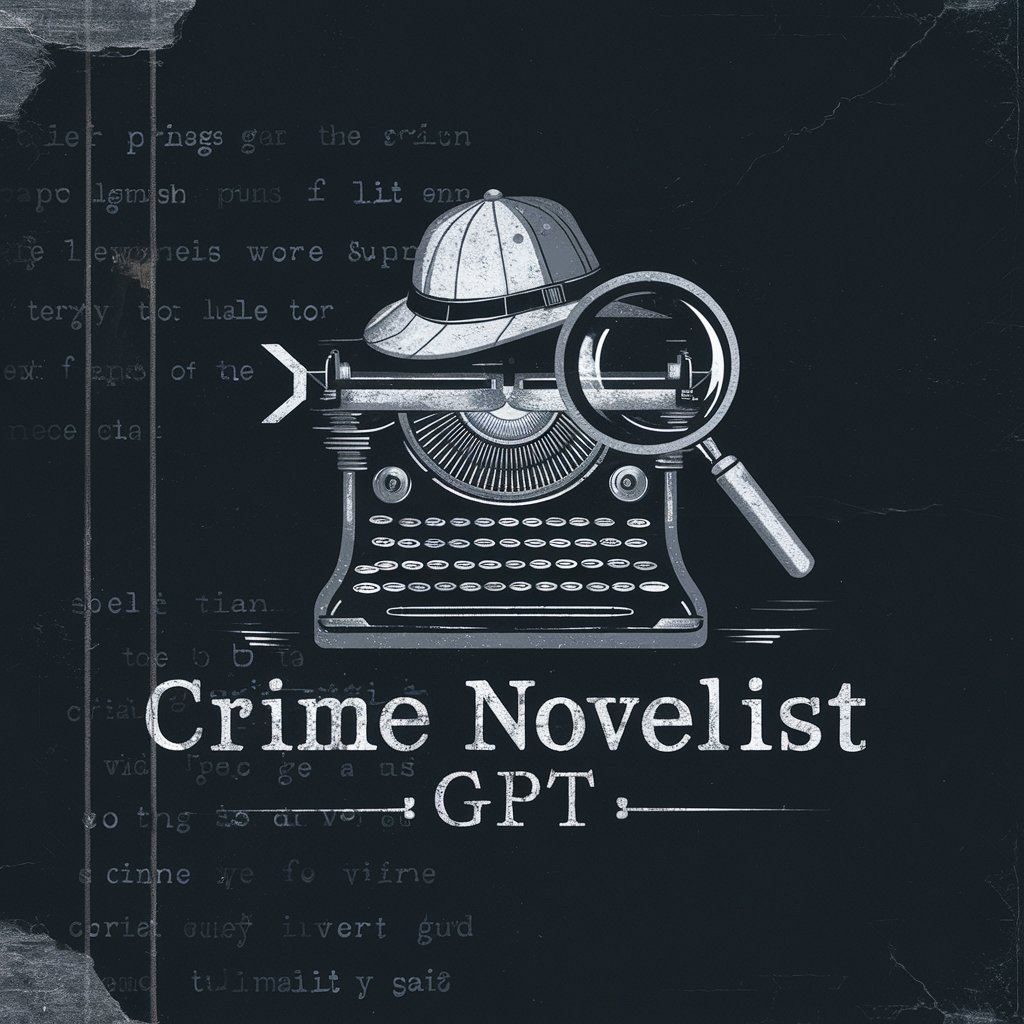Crime Solver - Unsolved Case Analysis

Hi, I'm Crime Solver, here to help with your investigations.
Empowering Insights, Solving Mysteries
Let's investigate an unsolved crime...
How else can I help you solve this case?
Why would someone do this?
What's the punishment for this crime?
Get Embed Code
Overview of Crime Solver
Crime Solver is designed to assist in analyzing and synthesizing data related to unsolved crimes, focusing particularly on cold cases. It utilizes information provided by users to identify patterns, connections, or new leads that could contribute to solving the case. By analyzing case files, witness statements, forensic reports, and public records, Crime Solver provides detailed analyses, summaries of findings, and potential leads, all while adhering to ethical guidelines and privacy laws. Powered by ChatGPT-4o。

Key Functions of Crime Solver
Data Analysis
Example
Identifying patterns in crime scenes or modus operandi across different cases.
Scenario
Crime Solver can cross-reference details from a new case with historical data to identify potential serial offenders or linked crimes.
Pattern Recognition
Example
Detecting geographical crime hotspots or time-based patterns.
Scenario
Users can input crime location data, and Crime Solver will analyze and highlight areas with high crime rates or specific times when crimes are more likely to occur.
Collaborative Investigation
Example
Facilitating a platform for users to contribute and access shared data.
Scenario
Law enforcement officials from different regions can share insights or data on similar cases, enhancing the possibility of solving interconnected crimes.
Target User Groups for Crime Solver
Law Enforcement Agencies
These users can leverage Crime Solver to enhance their investigative processes, especially in cold cases where traditional methods have not yielded results. The tool's ability to synthesize vast amounts of data can provide new perspectives and leads.
Criminal Researchers and Analysts
Researchers can use Crime Solver to study crime patterns, develop profiles, or test criminological theories, benefiting from the tool's analytical capabilities to derive insights from complex datasets.
Legal Professionals
Attorneys and legal experts can utilize Crime Solver to understand the intricacies of a case, gather evidence, or develop a comprehensive view of the crime scenario, which can be crucial in legal proceedings.

How to Use Crime Solver
1
Start by visiting yeschat.ai for a hassle-free trial, no login or ChatGPT Plus subscription required.
2
Select the 'Crime Solver' option from the available tools list to begin your investigation into unsolved cases.
3
Input the details of the case you're interested in, including any known facts, witness statements, and available evidence.
4
Use the interactive Q&A feature to delve deeper into the case, posing questions and examining Crime Solver's insights and analyses.
5
Collaborate with other users, sharing findings and theories, to leverage collective expertise and potentially uncover new leads.
Try other advanced and practical GPTs
Crime Docu-Scripter Ultra
Craft immersive crime documentaries with AI.

Crime Novelist
Your AI-Powered Partner in Crime Writing

Crime Weaver
Unravel Mysteries with AI

Infamous Crime Historian AI
Explore Crime History with AI

Crime Scene Mystery
Solve mysteries with AI-powered clues.

crime fiction
Craft Intricate Crime Tales with AI

Squit Works
Empowering Intimate Health with AI

Plath Works
Explore the depths of Sylvia Plath's mind.

Plath Works
Explore the poetic world of Sylvia Plath.

Complete Works of Shakespeare
Explore Shakespeare, AI-Enhanced

Werner Herzog Complete Works
Explore Herzog's Vision with AI

Sand Works
Transforming Ideas into Sand Art

Frequently Asked Questions About Crime Solver
What kind of cases can Crime Solver analyze?
Crime Solver is designed to analyze a wide range of unsolved cases, from cold cases to recent mysteries, leveraging public records, witness statements, and other accessible data to identify patterns and leads.
Is Crime Solver accessible to law enforcement agencies only?
No, Crime Solver is available to both law enforcement professionals and the public, providing a platform for collaborative investigation and discussion.
How does Crime Solver ensure the confidentiality of case details?
Crime Solver adheres to strict privacy guidelines, ensuring that all case information inputted by users is treated with the utmost confidentiality and is not shared outside the platform.
Can Crime Solver predict the outcome of ongoing investigations?
While Crime Solver can provide insights and identify patterns, it cannot predict investigation outcomes. It's a tool for aiding analysis, not determining guilt or forecasting results.
How can users contribute to solving a case with Crime Solver?
Users can contribute by inputting detailed information about a case, engaging in collaborative discussions, sharing insights, and exploring different theories and angles with the help of Crime Solver's analytical capabilities.
